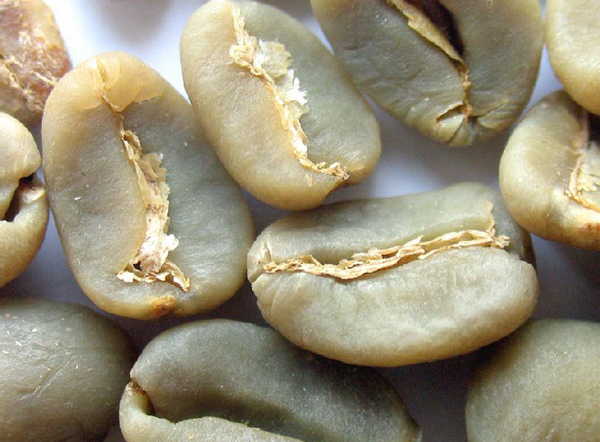The importance of cultivating beans after roasting Coffee knowledge
The discussion of raw beans and cooked beans in chemical substances has never stopped in the scientific community, but even after such a long and costly research, we still have a lot of question marks over many details. According to current forecasts, we can find at least a thousand different substances in roasted coffee beans. Unfortunately, we still don't know the exact number, or even what the composition is. Today, more than 200 substances are unknown. This paper discusses the causes and effects of coffee roasting and its unfreshness. let's start with coffee roasting.
Is the freshly baked coffee the best? Can we make a good cup of coffee from freshly roasted coffee beans? Our opinion is that it is best to wait more than 6 hours for coffee extracted without pressure apparatus (single coffee of origin) (cup test requires 8-12 hours), while for Espresso coffee it takes more than 5 days. The exhaust effect of coffee beans does not begin until 3 hours after baking. Coffee beans do not release any carbon dioxide, and the taste after cooking is very unstable. If you have ever washed hot water into freshly baked and ground coffee powder, or use it to make a cup of Espresso, you will find that it has a very sharp taste, bitterness of over-extraction and obvious acidity. It will be difficult to associate it with the smooth and sweet taste, and keep in mind that in any case, time is absolutely necessary for coffee to release carbon dioxide and stabilize the taste.
Each coffee bean contains about 200000 individual cells, each of which operates like a tiny pressure vessel, like a small reaction device. In the early stage of roasting, the moisture in the raw beans dissipates quickly, and the living water in the coffee begins to evaporate. With the increase of the temperature of coffee beans, the evaporation of water will put pressure on the cell wall. in this process, the element of water plays a leading role, and there is a series of very interesting reactions with the oil in the coffee. As the pressure increases, the cell wall begins to expand. The evaporation of water causes the cell wall to slowly harden. As the roasting process continues down, the pressure inside the beans increases, and the coffee oil is brought into the tiny pores in the cell wall, creating a sealing effect that retains carbon dioxide, other aromas and coffee aromas.
What does this have to do with packing? This important question requires a glimpse into the mysteries of the cell wall structure in coffee beans. The cell walls in coffee beans are only about 5 microns thick, and they can withstand the pressure of 140psi (pounds per square inch), which mainly comes from carbon dioxide produced during the second half of the baking process. Finally, a few days after the baking cycle, the so-called gas release process begins, and carbon dioxide begins to dissipate from the coffee beans.
The exhaust process of coffee beans is much longer than that of coffee powder after grinding, and the exhaust phenomenon of coffee beans will also shorten the life of coffee beans. In the early exhaust process, the air will replace the escaped carbon dioxide at about 1:1, and the air contains about 21% oxygen, so the air absorption will quickly oxidize the coffee, the coffee will continue to exhaust, the internal pressure of the coffee beans will decrease, and the exhaust speed will begin to slow down. Over time, 12-ounce bags of baked beans release more than half a cubic foot of carbon dioxide.
What about the impact on the development of taste? Experiments have shown that the taste of coffee beans changes more in the first five days than in the next five days, mainly because exhaust is the most active during the first five days of baking.

Important Notice :
前街咖啡 FrontStreet Coffee has moved to new addredd:
FrontStreet Coffee Address: 315,Donghua East Road,GuangZhou
Tel:020 38364473
- Prev

How to choose coffee utensils for hand-brewed coffee filter cup
There are also many kinds of filter cups needed for hand punching, including single-hole filter cups, three-hole filter cups, filter cups with a larger hole in the middle, and so on. If hot water is injected in the same way, the speed of filtration will be different, so the extraction time will also change. The difference in extraction time will lead to a difference in coffee flavor. The speed of filtration depends on the area of the void on the filter cup.
- Next

The Core value of Cafe Entrepreneurship
As coffee makers, their job is not just to be friendly to coffee makers. They also have a very important job, that is, to spread the professional coffee spirit. Coffee beans are divided into many grades, and coffee shops with different consumption levels will provide different grades of coffee beans. But we can't judge whether a coffee shop is professional or not according to the level of coffee beans provided. No matter what you have on hand
Related
- Beginners will see the "Coffee pull flower" guide!
- What is the difference between ice blog purified milk and ordinary milk coffee?
- Why is the Philippines the largest producer of crops in Liberia?
- For coffee extraction, should the fine powder be retained?
- How does extracted espresso fill pressed powder? How much strength does it take to press the powder?
- How to make jasmine cold extract coffee? Is the jasmine + latte good?
- Will this little toy really make the coffee taste better? How does Lily Drip affect coffee extraction?
- Will the action of slapping the filter cup also affect coffee extraction?
- What's the difference between powder-to-water ratio and powder-to-liquid ratio?
- What is the Ethiopian local species? What does it have to do with Heirloom native species?

